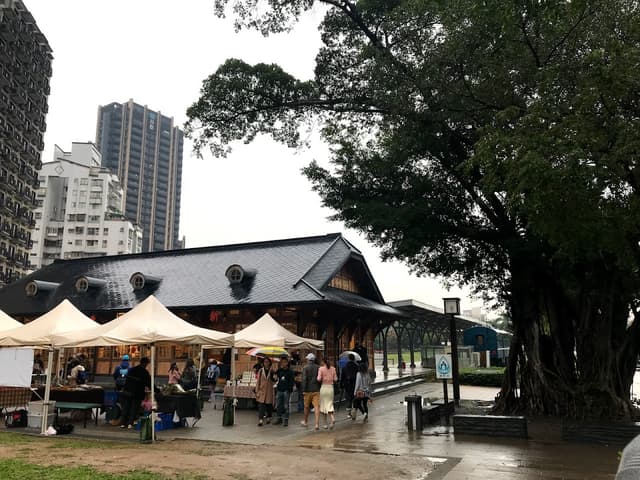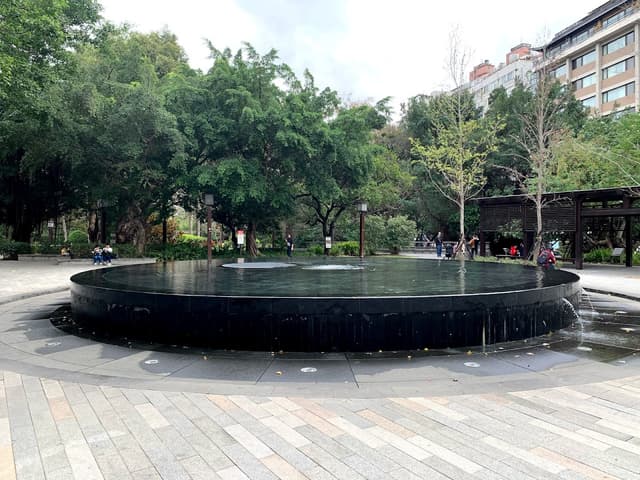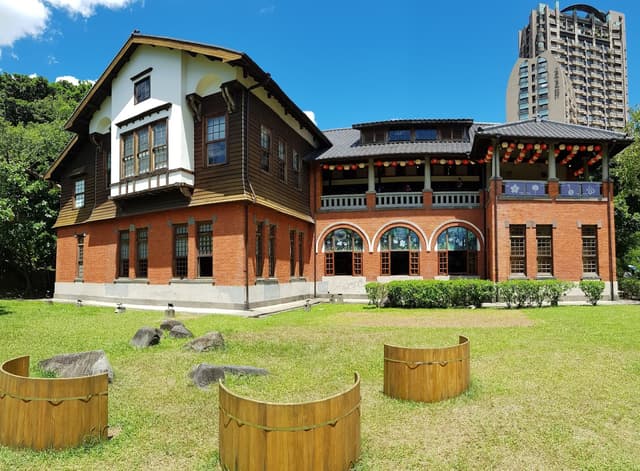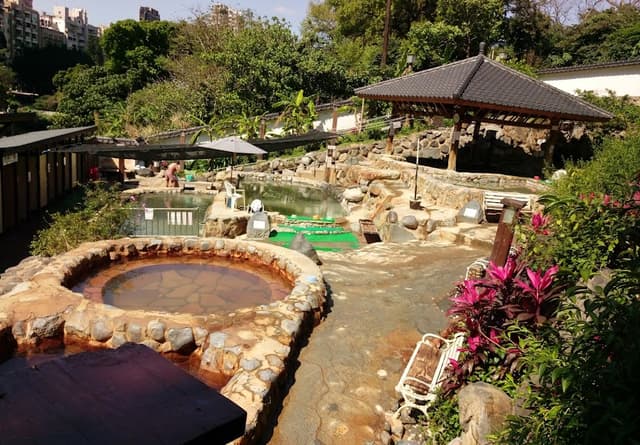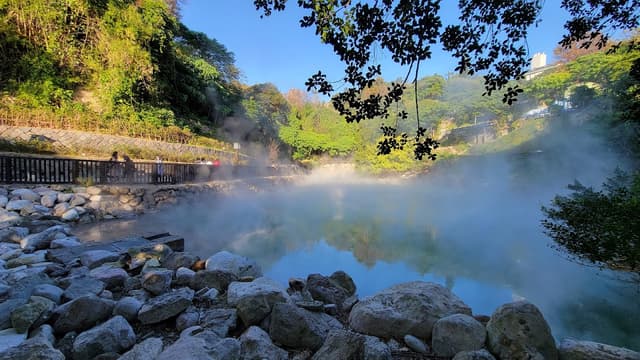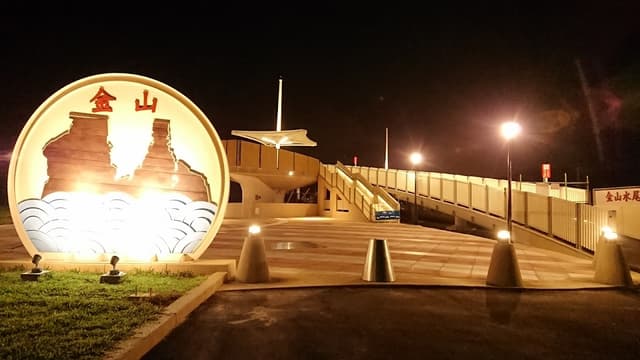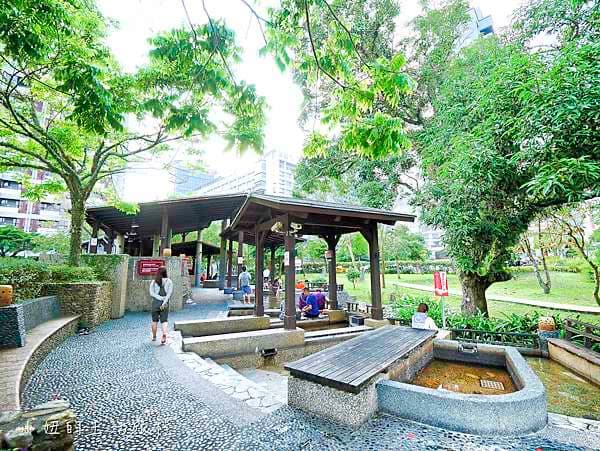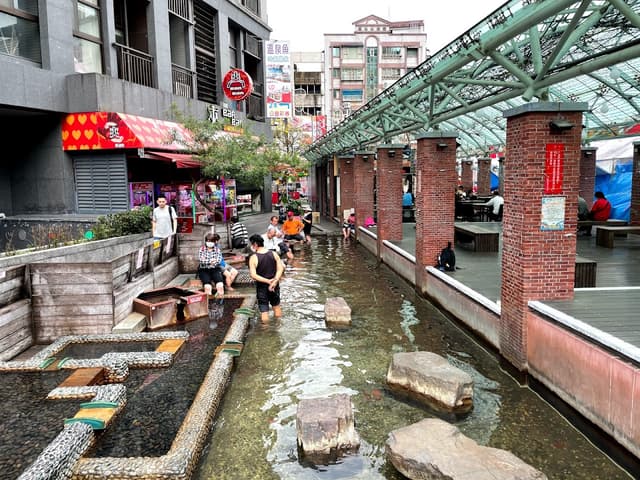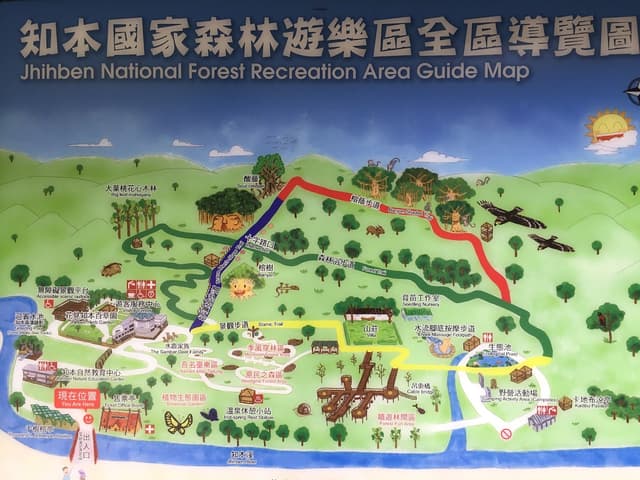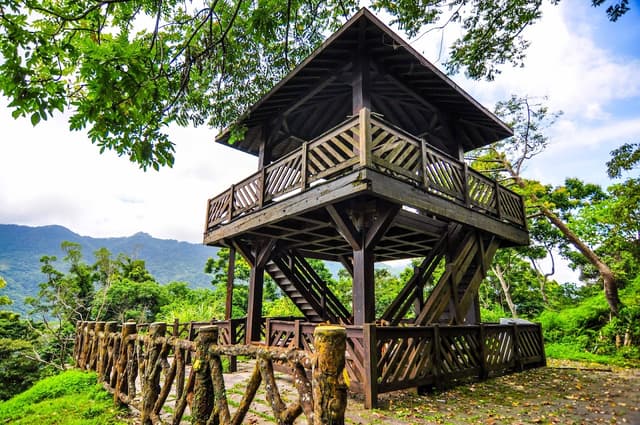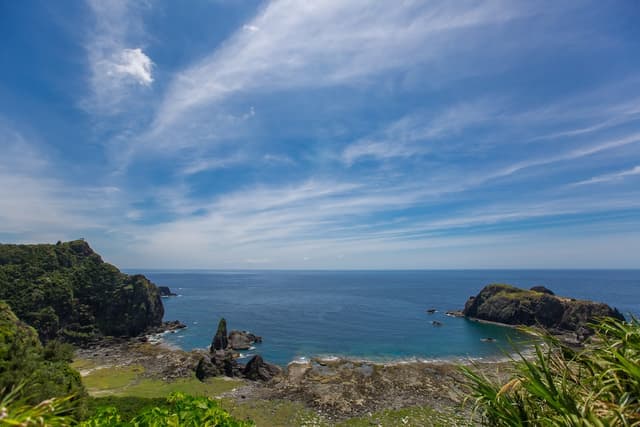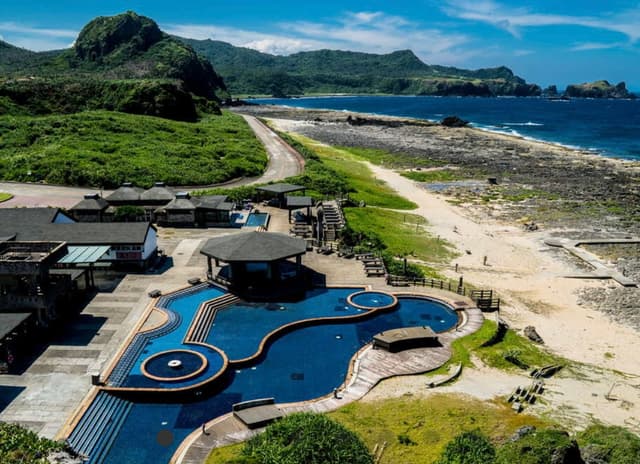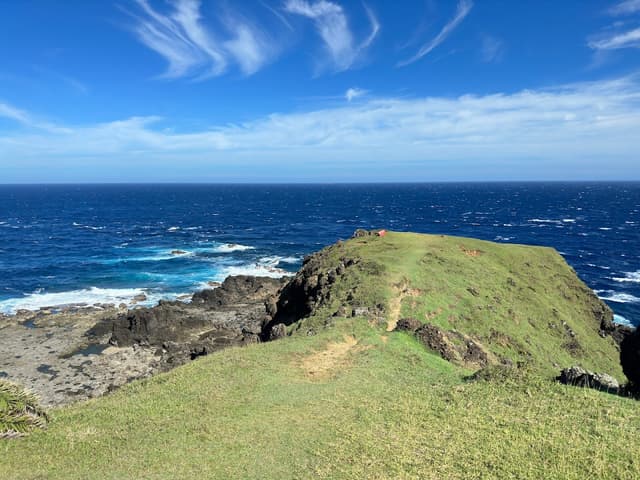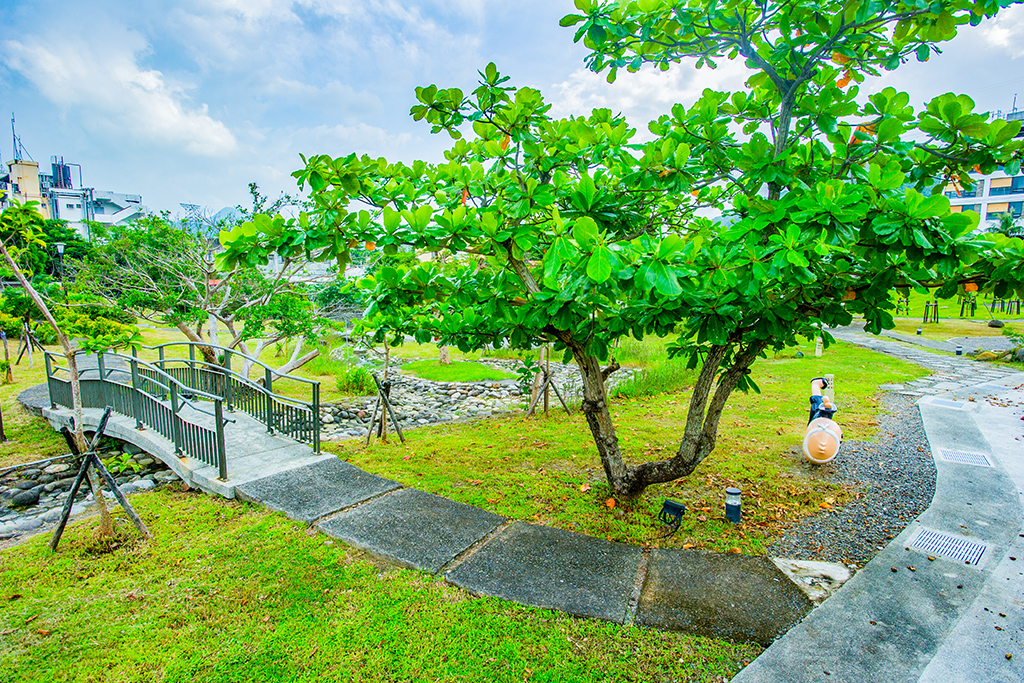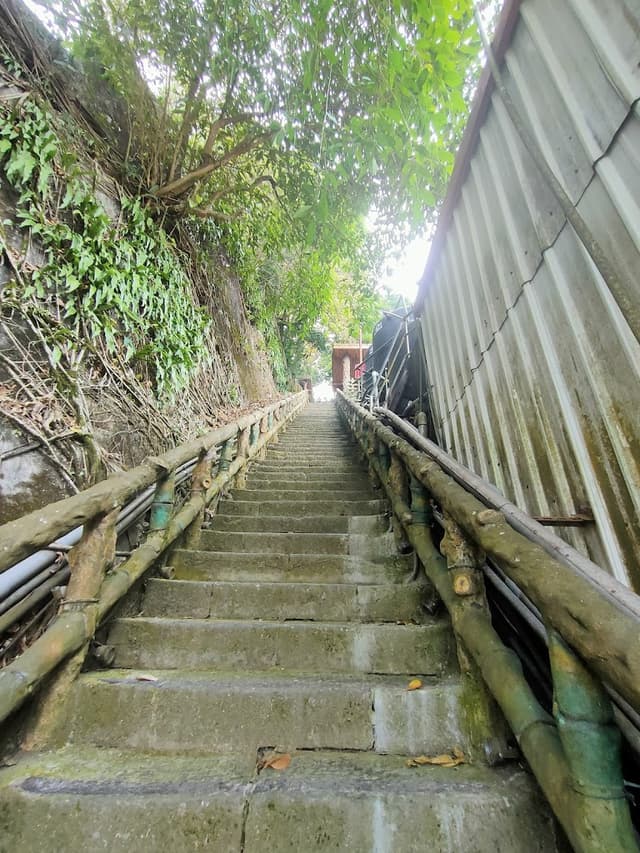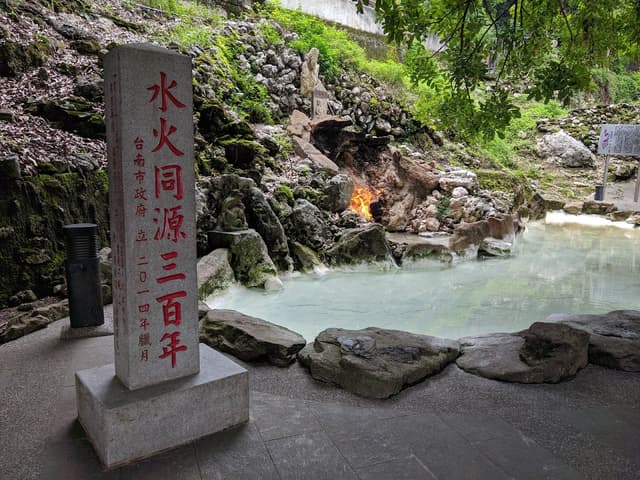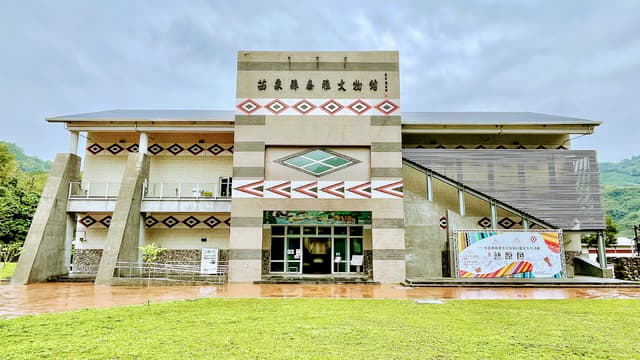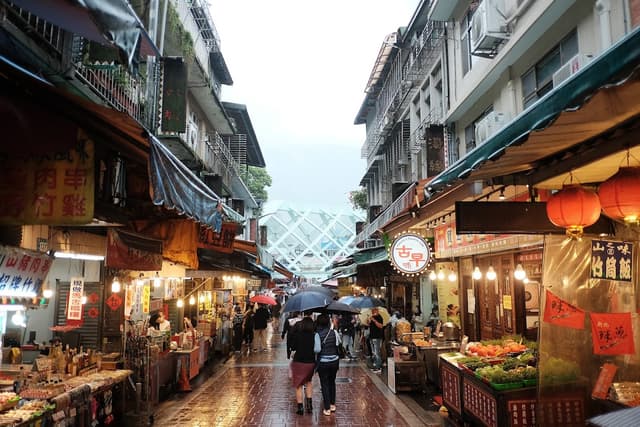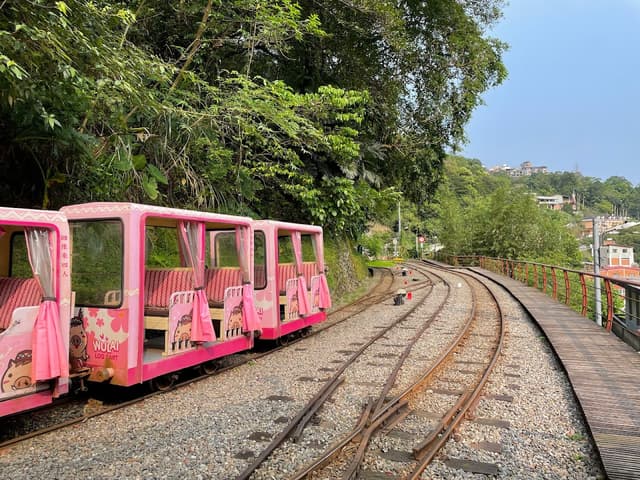Beitou Hot Spring
Beitou Hot Spring is located north of Taipei Basin and south of Datunshan. It was developed at the end of the 19th century and is the earliest hot spring area in Taiwan. Beitou Hot Spring originated from the volcanic eruption of Datunshan. A rich heat source was left under the volcano. The heat source heated the groundwater and then emerged from the cracks in the rock formations to form hot springs. The hot spring temperature ranged from 37 to 40 degrees, and the pH was 2.5 to 6.5, which is acidic. Moreover, it can be divided into three types of spring water: white sulfur, blue sulfur, and iron sulfur, respectively, while different types have various effects. For instance, white sulfur springs are weakly acidic sulfur salt springs that effectively treat chronic skin diseases, arthritis, and women's diseases; however, blue sulfur springs effectively relieve skin diseases, gout, and muscle soreness. In general, the hot springs located in Geothermal Valley and New Beitou are mainly blue sulfur springs, suitable for people of middle age and above to bathe. Besides, Beitou Hot Spring is also the hot spring closest to the city in Taiwan, which can be reached by the MRT solely. It is one of the must-visit attractions when traveling to Taipei.
Xin Bei Tou Historic Station
@Wei-Lai
Xinbeitou Historic Station is located at the entrance of the Beitou Hot Spring Area. Many hot spring attractions and parks are nearby after exiting the station, which is a vital artery of traffic in the Beitou area. Moreover, Xinbeitou Station is the only century-old station on the Tamsui Line and even in Taipei City. The body of the station is made of wood, and the entire building is connected with tenons, making it a unique historical building.

Details
Beitou Park
@Wei-Lai
Beitou Park is one of the most well-known parks in Beitou District. Many trails with beautiful natural scenery allow visitors to roam in nature. It can be reached as soon as you come out of New Taipei Station.

Details
Beitou Hot Spring Museum
@Wei-Lai
Beitou Hot Spring Museum Beitou, completed in 1913, was the most enormous hot spring public bath in East Asia at the time, and then in 1998, was converted into a museum. The museum mainly displays the history and culture of hot springs in Taiwan, displaying the knowledge and history of hot springs, which allows visitors to learn about Taiwan's hot springs before or after bathing in them.

Details
Beitou Park Outdoor Hot Spring Bathing Pool
@Wei-Lai
Beitou Park Outdoor Hot Spring Bathing Pool is a famous public bath in Beitou. The price is very affordable. It provides open-air hot spring baths, allowing tourists to enjoy hot springs in a natural environment. Remember to bring your swimwear!

Details
Thermal Valley
@Wei-Lai
The Sulfur Valley Geothermal Scenic Area is about one kilometer long. The valley is full of miscanthus. It is famous for its unique sulfur smell and geothermal activity. It is filled with steam and warm air all year round. Not only is it famous for hot springs, but it has rich geological landscapes, such as the cross-layers of sedimentary rock formations and joints of vertical rock layers, volcanic lava flows, pyroclastic rocks, fumaroles, etc.

Details
Sulfur Valley Geothermal Scenic Area
@Wei-Lai
The Sulfur Valley Geothermal Scenic Area is about one kilometer long. The valley is the whole of miscanthus. It is famous for its unique sulfur smell and geothermal activity. It is filled with white smoke and hot air all year round. It has rich geological landscapes and is famous for its hot springs, such as sedimentary rock formations. The most obvious are the cross-layers, joints of vertical rock layers, volcanic lava flows, pyroclastic rocks, hot springs, and fumaroles.

Details
Jinshan Hot Spring
Shuiwei Landscape Amusement Park
@Wei-Lai
Shuiwei Landscape Amusement Park is located next to the estuary where two streams meet. It is a small fishing village on the seaside. Previously, only residents would access it, while there were rare visitors. Now, a "Yuantan River Landscape Bridge" is built in the area. The beautiful arch bridge cuts through the sky, and the scenery is fascinating, attracting many tourists to experience the leisurely local fishing village scenery.

Details
Jinshan Old Street
@Wei-Lai
Jinshan Old Street is an ancient street built three hundred years ago. It is the oldest and most prosperous street in the surrounding area. It retains many traditional architectural and cultural features, as well as many local delicacies, attracting many tourists to visit.

Details
Viewing Pavilion
@Wei-Lai
The viewing pavilion in Jinshan Seaside Park is located on Shihtou Mountain. It was initially a military base. After lifting martial law, it is located at a high place, surrounded by the sea on three sides. It is the best point with a vast view of the coastline.

Details
Jiaoxi Hot Spring
Jiaoxi Hot Spring Park
@Wei-Lai
Jiaoxi Hot Spring Park is where the Yilan government provides tourists an excellent place to rest and bathe. Therefore, the visitor center of Jiaoxi Hot Spring Hotel is used to retain the original natural ecological, unique environment, and traditional lifestyle to update the footbath pool to accommodate 200 people, adding a new attraction to Jiaoxi tourism. In addition, the hot spring park has a tourism service center to provide tourists coming to Yilan with consultation services related to traveling in the county.

Details
Jiaoxi Landscape Square
@Wei-Lai
Jiaoxi Landscape Square is a park that provides a free hot spring experience. The square is equipped with four pavilion foot baths, and the temperature is maintained at about 30 to 34 degrees, which is very comfortable. Undoubtedly, it is a place suitable for walking and leisure.

Details
Tangweigou Hot Spring Park
@Wei-Lai
Tangweigou Hot Spring Park covers an area of about 1 hectare. In addition, it is the center of hot spring distribution in Jiaoxi Township, so the spring temperature is relatively high. There are public baths for all guests, viewing pavilions, hot spring corridors, free outdoor foot baths, walking trails, hot spring wells, small theaters, and shops in the park. At night, there are lights on both sides, making it lively and beautiful.

Details
Zhiben Hot Spring
Jhihben National Forest Recreation Area
@Wei-Lai
Jhihben National Forest Recreation Area, located in the Jhihben Hot Spring Area, has a rich natural ecology and diverse outdoor activity options. The Jhihben River flows through the south side of the forest recreation area, which is full of green mountains and lush forests. Among them, the bird resources are the richest, and it is the best base for bird watching in the suburbs of Taitung City.

Details
Seascape Pavilion in Jhihben National Forest Recreation Area
@Wei-Lai
The seascape pavilion is located in the Jhihben National Forest Recreation Area. You can see magnificent scenery from the highest position. When the weather is good, you can even enjoy the spectacular view of the Pacific Ocean.

Details
Asahi Hot Spring
Asahi Hot Spring is a rare thermal sea-water spring in Taiwan, which is located in the southeastern area of Green Island. The quality of water is transparent, with a temperature of around 53 degrees; however, the water at the outlet can reach 90 degrees. In addition, it is a sulfate chloride spring, so it has a salty taste, just like sea water. The hot spring area has three circular open-air baths near the sea, as well as a semi-outdoor bathing pool and a large swimming pool. The temperature of the water in the baths will change with the rising and falling tides, forming the most natural sauna. More significantly, it is one of only three salt water hot springs in the world. It is recommended to go in the afternoon to see the gorgeous sunset.
Green Island Sea Viewing Trail
@Wei-Lai
The total length of Green Island Seascape Trail is 0.26 kilometers, which takes about 20 minutes for a round trip. The trail is off the main island of Taiwan. Instead, it is located on Green Island in the East Pacific Ocean of Taiwan. Although the steep trail is a bit strenuous, since it is only 220 meters long, you can climb up in no time and enjoy a great view. When you reach the saddle at the end of the trail, you can overlook the tranquil port and the original appearance of local settlements. In addition, the ecology is rich, where native plants and ferns are visible. It is the only recommended must-visit trail among outlying islands on the list!

Details
Green Island Zhaori Hot Spring
@Wei-Lai
The quality of water of Zhaori Hot Spring is transparent, with a temperature of around 53 degrees; however, the water at the outlet can reach 90 degrees. In addition, it is a sulfate chloride spring, so it has a salty taste, just like sea water. The temperature of the water in the baths will change with the rising and falling tides, forming the most natural sauna. It is recommended to go in the afternoon to see the gorgeous sunset.

Details
Fanchuanbi Grassland
@Wei-Lai
Fanchuanbi Grassland is located in the southeast corner of Green Island. It is known as the "The Carpet of Green Island". Due to the prominent terrain, the topography is higher than the surrounding areas, and the acquired grazing, forming a low grassland landscape. It is also the place where people can enjoy the sunrise and moonrise in Green Island, one of the best spots to soak up the sea breeze.

Details
Sihj-hong-si Hot Spring
Sichongsi Hot Spring is located in the Hengchun Peninsula in southern Taiwan. It is one of the four major hot springs in Taiwan and is famous for its rich hot spring resources and comfortable hot spring experience. Its history can be traced back to the occupation period of the Qing Dynasty in the 19th century, but it was actually developed by the Japanese in 1898. The spring quality of Sichongxi Hot Spring is sodium bicarbonate spring, which is alkaline. The water temperature of Sichongxi changes with the seasons—mostly between 50 and 80 degrees Celsius. The spring water contains a large amount of sodium carbonate and has crystal clear hot spring water. Besides, it is said that the Sichongsi Hot Spring is drinkable and bathable. Try it if you are interested!
Sihjhongsi Hot Springs Park
@Wei-Lai
Sichongxi Hot Springs Park is located in the hot spring area. The environment in the park is quiet and beautiful, surrounded by mountains and rivers. There are comfortable hot spring pools and rest areas in the park. There is also some lighting arrangement at night, which is very suitable for couples and families to take a walk in this park after going to a hot spring.

Details
Guanziling Hot Spring
Guanziling Hot Spring is located in Tainan. It is also one of the four famous hot springs in Taiwan. Its hot springs flow from cracks in the underground rocks. The spring quality is alkaline, with an astringent and bitter taste, gray-black color, and tiny mud particles. The water is silky-smooth and has a strong smell of sulfur. Additionally, it is a rare mud hot spring in Taiwan, so it is known as the "black hot spring". When it comes to Guanziling Hot Spring, it was first discovered by the Japanese in 1898. After more than a hundred years of development, it has been formed as a scenic spot with many temples around it. From the foot of the mountain to the spring area, there are hot spring hotels, restaurants, and hot spring bathing spots. The place is a must-visit attraction for tourists who come to Tainan.
Taiwan Timber Story Museum
@Wei-Lai
The Taiwan Timber Story Museum is located in the Guanziling Hot Spring District. It is a free historical information museum that displays the history and relevant information of the timber industry in Taiwan. It creates a timber education environment through five-sense experience. It is a classroom where you can directly understand the timber culture of Taiwan.

Details
Guanziling Hero Slope
@Wei-Lai
Guanziling Haohan Slope is located in the Guanziling Scenic Area. During the Japanese occupation, it was originally built by the Japanese to rehabilitate and train wounded soldiers. It originally had 293 steps. However, due to the widening lanes and roads, dozens of lower floors were destroyed. Now, only 234 steps left. Since there are many steep steps, it is challenging to climb up. Therefore, if you can climb to the top, you are a hero, and this is where the name of the place comes from. On the top of Haohan Slope, there is also an osmanthus alley park, which is very beautiful.

Details
Fire and Water Spring
@Wei-Lai
Fire and Water Spring: this strange scene is located south of the Guanziling Hot Spring Area. It is famous for the phenomenon that shows flames constantly emerging from the water. Initially, the fire was powerful and concentrated in a bunch. It was not until the Baihe earthquake in 1964 that the flames spread out from different holes. Although it is weakened, it is still not extinguished. It breaks the theorem of the incompatibility of water and fire, attracting countless people to explore here.

Details
Guguan Hot Spring
Guguan Hot Springs is located at the foothills of Basianshan in the middle of Taiwan, one of the eight scenic spots in Taiwan. The spring water in Guguan is clear and contains sulfide and salt. Since it includes a large amount of sulfide, you can easily smell the unique pungent smell of sulfide when you get close to it. The water temperature is around 48 degrees Celsius, and the water is mild. Therefore, the spring is drinkable and bathable. The rich hot spring resources and beautiful natural environment attract many tourists to take vacations there. There are seven mountains surrounding Guguan. Therefore, you can climb the mountains to enjoy nature and go to the hot springs after climbing. It is recommended to spend one to two days here. You can get as close to nature as possible and relax your body and mind simultaneousl
Guguan Hot Springs Park
@Wei-Lai
Guguan Hot Springs Park is located in the hot spring area next to the city center. Many hot spring hotels, restaurants, and shops provide tourists with various leisure and entertainment options. It is suitable for visiting and tasting local delicacies after going to a hot spring.

Details
Guguan Visitor Center
@Wei-Lai
The Guguan Visitor Center is located in Guguan City. In 2017, the original visitor center was transformed into a small museum since it is hoped that tourists can use it as the best tour transit station and a starting point for recharging knowledge before exploring Guguan mountain and going to hot springs. It is a perfect place where you can learn more about Guguan.

Details
Tai an Hot Spring
Tai'an Hot Spring is located on the mountainside of mountain areas in Miaoli. The spring quality is an alkaline carbonated spring with a water temperature of about 47 degrees. The water is colorless and odorless. After bathing, the skin is smooth and comfortable. It is a quite popular beauty hot spring in Taiwan. Since Tai'an Hot Spring is located in a canyon, many suspension bridges are along the way. Hence, you can also enjoy the beautiful scenery in addition to relaxing in the hot springs.
Ayatal Indigenous Cultural Park
@Wei-Lai
Ayatal Indigenous Cultural Park displays the culture and historical materials of the local indigenous Atayal people, combining Tai'an hot spring resources and Atayal culture. There are also artistic performances and indigenous vendors on holidays, allowing the public to enjoy the tribal songs and dances while enjoying the food. It is suitable for travelers who want to know more about Tai'an culture.

Details
Shuiyun Suspension Bridge
@Wei-Lai
Shuiyun Suspension Bridge is located in the inner part of Tai'an Hot Spring Area. It was the filming scene of a Taiwanese TV series. You can see the clear and beautiful valley while walking on the suspension bridge. Going deeper, you can see Shuiyun Falls. It is one of the must-see ecological attractions around the Tai'an Hot Spring Area.

Details
Wulai Hot Springs
Wulai Hot Spring is located in a valley in Wulai Village, Wulai District, New Taipei City, with Tonghou River and Nanshi River meandering through on both sides. Wulai Hot Spring is a weakly alkaline sodium bicarbonate spring, which has the effect of exfoliating and promoting metabolism. After the treatment, the skin will become softer and fairer, and it is known as the "beauty hot spring." Moreover, the water is clear and drinkable, but one thing you should be aware of is that the spring temperature is high, about 80 degrees Celsius. The history of this hot spring is said to be that the Atayal people were hunting by the stream one day and suddenly found bursts of smoke coming from the stream. Since the stream was hot, they named the place "Steaming Hot Water." Today, many hot spring resorts are already in the Wulai Hot Spring area. In addition, the Cherry Blossom Festival is held every February to March, and many well-known attractions within a five-minute drive from the hot spring area, such as Wulai Scenic Area, Yun-Hsien Park, and Neidong Forest Park, which makes a lot of tourists indulge in pleasures without stop.
Wulai Old Street
@Wei-Lai
Wulai Old Street is located in the Wulai Hot Spring Area. It is a quaint neighborhood that retains many traditional architectural and cultural features. It is an excellent place to experience local specialties and shop for handicrafts. Moreover, most restaurants focus on aboriginal characteristics so tourists can taste aboriginal-style delicacies, which are rare in other places. At the same time, you can also admire the performance of Taiwanese indigenous people. It also attracts tourists to visit when various varieties of cherry blossoms take turns blooming, and the festival of cherry blossoms is held from February to April yearly.

Details
Wulai Log tour Cart
@Wei-Lai
Wulai Log Cart was initially built to transport wood. It was the light railway powered by human power and has now been transformed into a sightseeing and recreational railway. The railway is 1.5 kilometers long and runs through the Wulai Mountains. It takes tourists through the mountains and forests to enjoy the spectacular natural landscapes. Besides soaking in hot springs, it is one of the indispensable itineraries in the Wulai area.

Details
* * *

